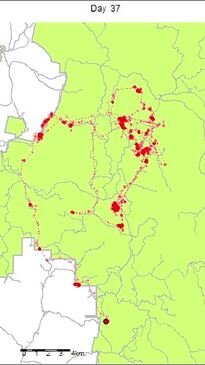Mallee dingoes to be trapped and radio-collared
Northwest Victorian dingoes will be radio collared and tracked. But will farmers have access to the data to protect their sheep?

Agriculture Minister Ros Spence has finally agreed to fund the fitting of radio-tracking collars to five or six northwest Victorian dingoes, so they can be tracked by her department.
Ms Spence’s office said the state government had invested in a $2.5m support package to lower the risk of livestock predation, including a dingo collaring project in the Big Desert Wilderness Park and Wyperfeld National Park Area.
But the minister has left farmers in the dark on whether the department will give them access to the tracking data and target problem dogs.
Sheep attacks have more than doubled on some farmers’ properties since Ms Spence and Environment Minister Steve Dimopoulos ended all wild dog control in the state’s northwest in March last year.
National Wild Dog Management Co-ordinator Greg Mifsud lodged a proposal with the government in June last year to radio collar and track dogs to help prevent attacks.
But to achieve that goal, more dogs would need to be tracked, especially those in areas experiencing repeated attacks.
“There’s nothing to stop them doing it (radio tracking) if they genuinely want to stop attacks on livestock,” Mr Mifsud said.
“My hope is it provides information on dogs within the park, as well as those attacking sheep, so farmers can adapt their monitoring of stock accordingly.”
He said GPS technology could be used to alert farmers whenever a wild dog came close to their properties.
Ms Spence’s office said radio tracking information would “help identify dingo behaviours and movement, helping farmers to make informed management decisions”, but would not confirm what tracking data would be available to landholders.
The government did confirm dingoes would be captured using remotely monitored traps that ensured all dogs were released within 24 hours, in accordance with regulations under the Prevention of Cruelty to Animals Act.

Mr Mifsud said more than 1000 dingoes had been caught using soft-jawed (rubber lined) traps and radio collared over the past decade, as part of various research and management trials.
“If conducted in an inclusive and consultative manner the dingo radio collaring program would provide the opportunity to rebuild and restore trust between landholders and government,” he said.
Victorian Farmers Federation president Brett Hosking said the government could go one step further and radio-collar dogs with boundary collars, which are commonly available for controlling domestic dogs.
The solar-powered collars use GPS tracking to deliver a vibration, sound and ultimately static pulse if a dog moves out of a defined area.




